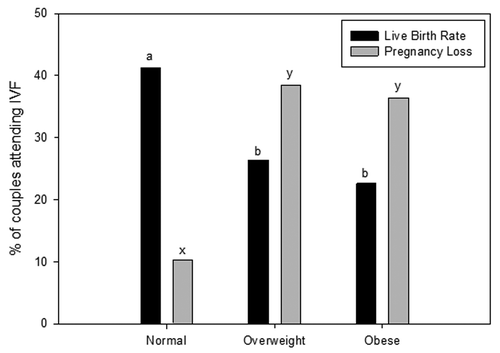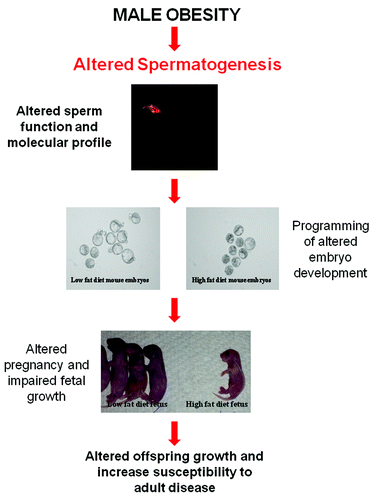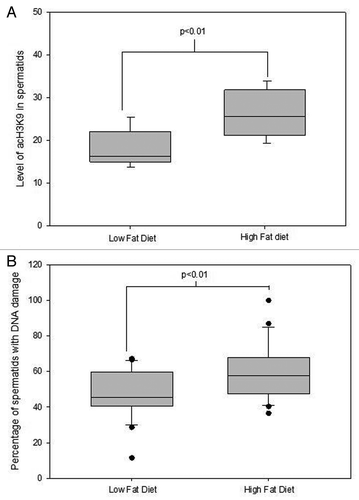Figures & data
Figure 1. The effect of male obesity on pregnancy success in couples undergoing assisted reproductive technologies. Data taken from ref. Citation20 from 305 couples undergoing assisted reproductive technologies. BMI classification ranges, Normal (18.5 – 24.9 kg/m2), Overweight (25.0 – 29.9 kg/m2) and Obese (≥ 30 kg/m2). Data was analyzed through a multivariate analysis including both paternal and maternal BMI. Different letters denote significance at p < 0.05.

Figure 2. Hypothesis for the effect of male obesity on spermatogenesis and how it impacts offspring health. Paternal obesity in rodents has been shown to negatively impact the metabolicCitation13 and reproductive healthCitation14 of offspring. Sperm are the likely mediator for altering the developmental profile of the embryo,Citation20,Citation26 fetesCitation20,Citation26 and then resultant offspring.Citation13,Citation14,Citation30,Citation31 This change is likely to be molecular in natureCitation99 and resulting from impaired spermatogenesis as a result of the obesity phenotype most likely occurring through changes to acetylation,Citation35 methylation or non-coding RNA status of sperm .

Table 1. Summary of the studies investigating paternal obesity and their effect on basic sperm parameters
Figure 3. The effect of diet induced obesity in C57BL6 mice on Acetylation and DNA damage levels in spermatids during protanimation. Data taken from.Citation35 Data was analyzed through a univariate general linear model with replicate fitted as a covariate and mouse ID as a random factor. Correlation data was determined by a Pearson’s Rho. (A) The effect of diet induced obesity in mice on acetylation levels of H3K9 in elongating spermatids representative of > 120 spermatids from at least 5 mice per treatment group. (B) The effect of diet induced obesity in mice on DNA damage levels in elongating spermatids representative of > 4000 spermatids from at least 5 mice per treatment group. There was a negative correlation found between acetylation levels of H3K9 and DNA damage levels in round spermatids R2 = 0.60, p = 0.023 n = 8 animals.
